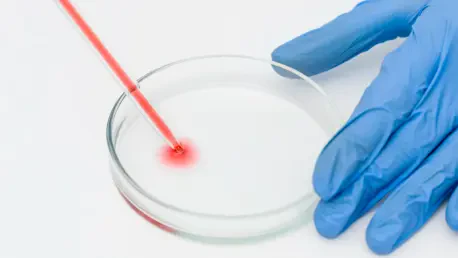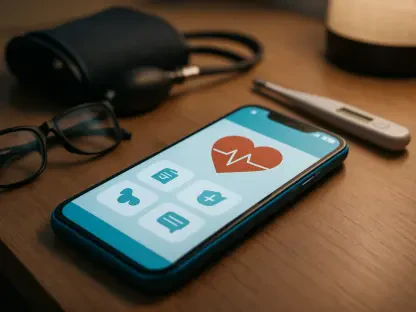Listen to the Article
In vitro diagnostic technologies provide medical professionals with a platform to perform tests on biological samples collected from the human body, including urine, blood, and tissue. These treatment devices allow professionals to do research that can enhance health services and improve patient outcomes. This article expands on the value of smart technology in medicine, how these advancements shape the future of health, and the relevant market trends associated with them.
The Value of Diagnostic Devices in Modern Medicine
In vitro diagnostic devices make it possible to administer custom care that minimizes the need for invasive surgeries in modern medicine. Clinicians use medical technologies that support early and accurate treatment to make informed decisions and manage public health. With reliable data from diagnostics, professionals can prevent illnesses and monitor the progress of relevant therapies.
Various medical branches use diagnostic applications to address a diverse group of conditions that affect patients. Using smart technologies enables clinicians to deliver efficient services and improve several key areas, including the ones highlighted below.
Early Disease Detection
Between 30% and 50% of cancers are identifiable and preventable using in vitro diagnostics. With these technologies, professionals can screen and detect conditions at their earliest stages or before symptoms appear, helping accelerate treatment. Early detection facilitates rapid intervention that prevents illnesses from progressing and improves health outcomes. Using the warnings from the test results, doctors get enough time to treat symptoms and reduce the risk of mortality.
Better Diagnosis
Medical technologies offer precise information about illnesses that enables professionals to make informed decisions about diagnosis, treatment, prognosis, and disease management. When accurate information is available, it facilitates personalized treatment strategies that cater to a patient’s unique needs and biological makeup. Therapies that leverage tailored care are more effective in treating the root of the problem, potentially minimizing adverse effects.
Efficient Allocation of Resources
Diagnosing illnesses correctly allows hospitals to focus their resources and efforts on specialized services. Diagnostic excellence reduces unnecessary tests and prevents misdiagnosis, offering better and safer care. Equally, departments can prioritize their spending based on the data from medical devices, which saves administrative costs and increases operational efficiency.
Monitor Public Health
In vitro diagnostic devices are also useful for monitoring the prevalence and transmission patterns of diseases. Being equipped with information enables professionals to inform on healthcare policies and develop targeted prevention strategies.
Additionally, diseases have distinct biomarkers, and analyzing them allows doctors to adjust treatment approaches as required. Diagnostic devices help to control the spread of viruses, as in the case of the pandemic, which helps with upholding a high standard of care.
Good Turnaround Times
Smart tech accelerates the diagnostics process by integrating digital systems into existing workflows. This equips clinicians to manage data more efficiently and improve their work, reducing turnaround times for test results.
How Technological Advancements Are Reshaping the Future of Diagnostics
Next-Generation Sequencing
Using diagnostic technology in treatment changes how doctors diagnose and understand illnesses. Next-generation sequencing enables large-scale studies that offer a detailed analysis of genetic material, providing necessary information about unique DNA patterns. Clinicians can use this advancement to detect genetic disorders and cancerous mutations early, leading to personalized treatments and targeted strategies.
Biosensors and Wearable Technologies
Integrating biosensors and wearable tech into medicine is a suitable way to continuously monitor health. Clinicians use sensor technologies to identify biomarkers in real time for more dynamic and specialized healthcare assessments. Similarly, wearable equipment empowers patients to actively manage their health at home and can signal issues when they arise to enable proactive intervention.
AI in Diagnostics
Information is key in healthcare. Professionals use AI to source big data that informs health decisions. Machine learning algorithms help identify subtle components in medical information that would otherwise go undetected. Integrating intelligence into in vitro technologies offers speed and accuracy when analyzing datasets, allowing for reliable treatment solutions.
Microfluidics
By manipulating fluids at a microscale, clinicians can manage small volumes at a time, increasing precision during tests and reducing the need to collect extensive samples. Microfluidics accelerates treatment solutions, allowing for efficient point-of-care testing. This technology presents a controlled and cost-effective way to innovate and improve therapy solutions.
Lab-on-a-Chip Approaches
Unlike conventional processes, in vitro diagnostic devices have micro components that can transfer laboratory functions onto a miniature chip. This approach enables clinicians to bring valuable resources to patients, especially those in areas where these are limited. Portable and user-centric technologies improve healthcare delivery and performance.
Market Trends and Innovations
North America is the leading region in the in vitro diagnostics industry due to its high adoption rates and tailored infrastructure. Europe follows closely behind as it rapidly develops and experiences early adoption. Countries in the Asia-Pacific region are also becoming key players in the market, increasingly expanding access to health devices.
From 2025 to 2030, the market is expected to grow exponentially, with an annual compounded rate of over 5%. This upward trajectory reflects the increasing scale of technological innovations, diagnostic reliance, and device testing in medical environments.
Noteworthy components are shaping the diagnostics industry, including:
Portability: Using miniature medical technology to facilitate user-friendly application and home testing. Portability promotes higher point-of-care and customer adoption.
Digitalization: Remote access to therapies is becoming more possible as clients and hospitals leverage digital health solutions. Today, people use smartphones and cloud-based platforms to reach doctors and receive healthcare advice.
Customization: In vitro diagnostic devices can detect biomarkers to enhance treatment plans and enable tailored solutions based on a patient’s genetic profile, especially in oncology.
Automation: AI tools are rapidly integrating into medicine, offering ways to streamline workflows and enhance laboratory tests for more reliable results. Using automated solutions improves the accuracy and speed at which clinicians can diagnose patients.
Conclusion
In vitro diagnostic technologies are the future of diagnostics. They facilitate early detection, tailored treatment, and quality patient outcomes, allowing medical professionals to stay ahead of viruses and health conditions.
By using AI and diagnostic devices in healthcare, clinicians promote reliability, accessibility, and user-centric services that enhance patients’ standard of living. Machine learning equips medical professionals with the predictive tools necessary for early intervention, which improves patient outcomes and reduces costs.
The industry’s commitment to innovation positions it as a trailblazer in medicine, contributing to a healthier world. Approaches to healthcare will continue to develop as the global market adopts new in vitro diagnostic technologies. Next-generation sequencing, biosensors, and microfluidics enable a future of precision and personalization in disease diagnosis and treatment.









